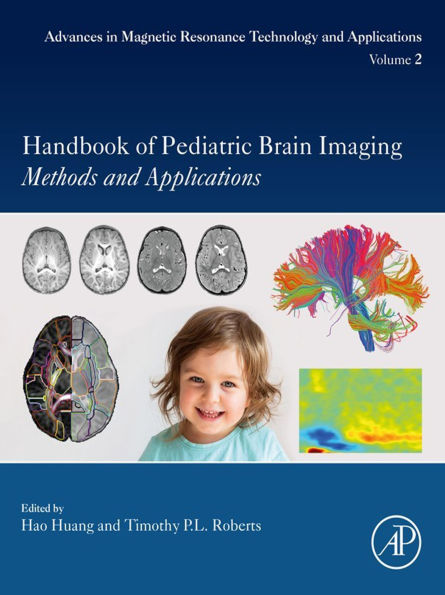Handbook of Pediatric Brain Imaging: Methods and Applications
Handbook of Pediatric Brain Imaging: Methods and Applications presents state-of-the-art research on pediatric brain image acquisition and analysis from a broad range of imaging modalities, including MRI, EEG and MEG. With rapidly developing methods and applications of MRI, this book strongly emphasizes pediatric brain MRI, elaborating on the sub-categories of structure MRI, diffusion MRI, functional MRI, perfusion MRI and other MRI methods. It integrates a pediatric brain imaging perspective into imaging acquisition and analysis methods, covering head motion, small brain sizes, small cerebral blood flow of neonates, dynamic cortical gyrification, white matter tract growth, and much more. - Presents state-of-the-art pediatric brain imaging methods and applications - Shows how to optimize the pediatric neuroimaging acquisition and analysis protocols - Illustrates how to obtain quantitative structural, functional and physiological measurements
1140435032
Handbook of Pediatric Brain Imaging: Methods and Applications
Handbook of Pediatric Brain Imaging: Methods and Applications presents state-of-the-art research on pediatric brain image acquisition and analysis from a broad range of imaging modalities, including MRI, EEG and MEG. With rapidly developing methods and applications of MRI, this book strongly emphasizes pediatric brain MRI, elaborating on the sub-categories of structure MRI, diffusion MRI, functional MRI, perfusion MRI and other MRI methods. It integrates a pediatric brain imaging perspective into imaging acquisition and analysis methods, covering head motion, small brain sizes, small cerebral blood flow of neonates, dynamic cortical gyrification, white matter tract growth, and much more. - Presents state-of-the-art pediatric brain imaging methods and applications - Shows how to optimize the pediatric neuroimaging acquisition and analysis protocols - Illustrates how to obtain quantitative structural, functional and physiological measurements
175.0
In Stock
5
1

Handbook of Pediatric Brain Imaging: Methods and Applications
580
Handbook of Pediatric Brain Imaging: Methods and Applications
580
175.0
In Stock

Product Details
| ISBN-13: | 9780128166420 |
|---|---|
| Publisher: | Elsevier Science & Technology Books |
| Publication date: | 10/27/2021 |
| Series: | Advances in Magnetic Resonance Technology and Applications , #2 |
| Sold by: | Barnes & Noble |
| Format: | eBook |
| Pages: | 580 |
| File size: | 49 MB |
| Note: | This product may take a few minutes to download. |
About the Author
What People are Saying About This
From the B&N Reads Blog
